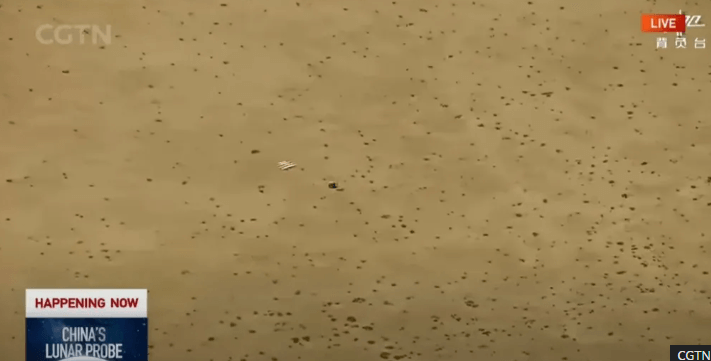China’s Chang’e-6 mission has successfully returned to Earth, bringing back unprecedented samples from the Moon’s far side. The probe landed in Inner Mongolia on Tuesday, concluding a nearly two-month mission filled with challenges.

Researchers are eagerly anticipating the analysis of these samples, which may provide insights into planetary formation. This mission marks the second time China has landed on the Moon’s far side, the first being in 2019. The far side presents significant difficulties due to its distance from Earth and rugged terrain characterized by large craters and limited flat areas.
The less-explored far side of the Moon intrigues scientists because it may contain ice deposits, which could be used for water, oxygen, and hydrogen extraction. The success of the Chang’e-6 mission is a source of national pride and has attracted international attention, particularly from the United States.
Chinese state media broadcasted images of officials raising the national flag at the landing site in Inner Mongolia. President Xi Jinping personally congratulated the mission team, expressing hopes for continued exploration and scientific breakthroughs to benefit humanity and enhance China’s space capabilities.
Launched in early May, Chang’e-6 landed near the Moon’s south pole a few weeks later. The 53-day mission involved collecting lunar soil and rock samples, taking surface photographs, and planting a Chinese flag. The samples will be sent to Beijing for analysis.
This mission is China’s sixth lunar endeavor and its second targeting the Moon’s far side. Named after the Chinese moon goddess Chang’e, the probe utilized advanced equipment to gather its samples. Over the past decade, China has significantly invested in its space program, aiming to compete with the US and Russia.
China plans to send a crewed mission to the Moon by 2030 and eventually establish a lunar base at the south pole. Meanwhile, the US aims to return astronauts to the Moon by 2026 with the Artemis 3 mission. Experts believe that future space competition will focus on securing and managing lunar resources.


Comments are closed.